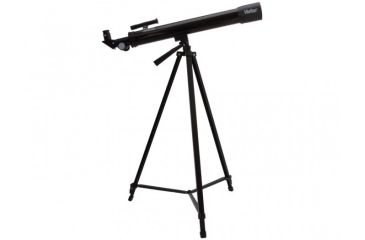

A micro-adjustable altitude control offers slow motion control enabling precise adjustments. With two eyepieces and a 3x Barlow lens, the scope has multiple magnifications capabilities of 56x, 168x, 175x, and 525x. Product description The Vivitar TEL-60700 60mm f/11.7 Refractor Telescope is an optimum solution for beginners intending to study astronomy, wildlife, cityscapes, or view sporting events.
G494 vivitar telescope how to#
Download an official Vivitar user manual in which you will find instructions on how to install, use, maintain and service your product.Īnd do not forget – unsuitable use of a Vivitar product will considerably shorten its lifespan! Health and property during use, as well as recognition of liability on the part of the manufacturerįor possible defects should you make a warranty claim. User manual is an integral part of any Vivitar product,Īnd if it is sold or transferred, they should be handed over jointly with the product.įollowing the instructions for use is an essential prerequisite for protecting That need to be followed during installation and operation.īefore starting your appliance, the user manual should be read through carefully.įollow all the safety instructions and warnings, and be guided by the given recommendations. User manual for the Vivitar TEL-60700 60mm f 11.7 Refractor contain basic instructions
Authorized service for Vivitar Refractors. Troubleshooting (does not switch on, does not respond, error message, what do I do if.). Technical information and basic settings. The equatorial mount is generally considered to be more helpful.User Manual for Vivitar TEL-60700 60mm f 11.7 Refractor Telescope Click to enlarge the pictureĬontents of the user manual for the Vivitar TEL-60700 60mm f 11.7 Refractor From there you'll use the slow motion cable controls or panhandle controls to make the smaller movements. It takes more time to get accustomed to the equatorial mount each time you want to look at a different star or planet you have to unlock the axis and take aim at the heavenly body using the finderscope and lock it once you have the general location. It will then follow the motion of the sky around this point, moving from east to the west (as the stars move). The polar axis (which is the rotating part closer to the telescope's base) needs to be aligned to Polaris, the North Star. Equatorial mount swings across the celestial North to South and East to West. It is more simple than the equatorial telescope. Altazimuth mount operates my going up and down and side to side, making it easier for beginners to operate. You'll need to know which kind of telescope you have so you can learn how to operate your telescope. Telescopes typically come in two types: equatorial or altazimuth. This one tends to be more versatile, but they do tend to be more expensive than the other types. They are good photographic telescopes and they are a lot easier to carry than the reflector. The catadioptric is a compound telescope, combining both lenses and mirrors. 
Also, you can't view terrestrial objects with this telescope, because they will appear upside-down. This is one of the better beginner telescopes and it usually has pretty good visibility, although water has a tendency to condense on the optics of the telescope which can be irritating.

 The reflector employs a large concave mirror rather than a lens for the purposes of accumulating and focusing light. Unfortunately, it is very hard to see faint objects like galaxies and nebulae. It travels well and doesn't need much maintenance. This one is better for viewing the Moon and planets, usually giving a nice, crisp image. The refractor basically has a long thin tube with an objective lens at the front that collects and focuses the light. Which one you choose will be based on what you want to observe, where you are, and so on. There are really on three basic telescope types: refractor, reflector and catadioptric. Different telescopes are better for different types of viewing.
The reflector employs a large concave mirror rather than a lens for the purposes of accumulating and focusing light. Unfortunately, it is very hard to see faint objects like galaxies and nebulae. It travels well and doesn't need much maintenance. This one is better for viewing the Moon and planets, usually giving a nice, crisp image. The refractor basically has a long thin tube with an objective lens at the front that collects and focuses the light. Which one you choose will be based on what you want to observe, where you are, and so on. There are really on three basic telescope types: refractor, reflector and catadioptric. Different telescopes are better for different types of viewing.








 0 kommentar(er)
0 kommentar(er)
